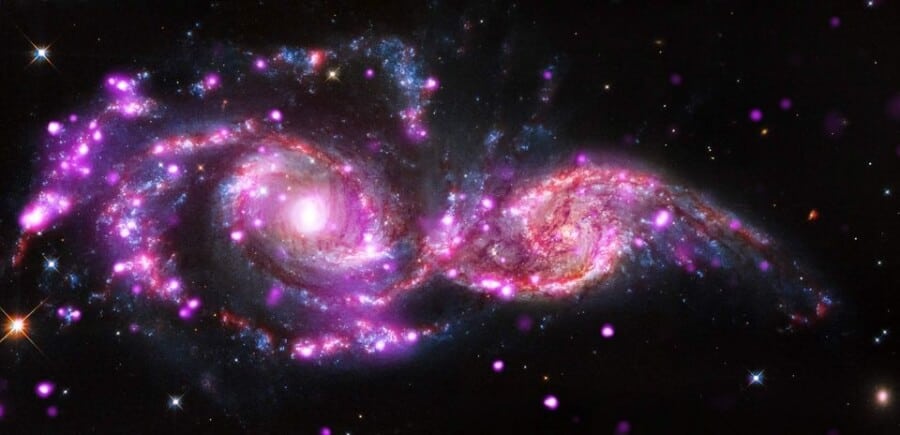New image from NASA showing “ultra-luminous X-ray sources” (ULXs) studding the spiral galaxies NGC 2207 and IC 2163, which are grazing each other about 130 million light-years from Earth, in […]
New image from NASA showing “ultra-luminous X-ray sources” (ULXs) studding the spiral galaxies NGC 2207 and IC 2163, which are grazing each other about 130 million light-years from Earth, in the constellation Canis Major.
The photo actually combines the data from three NASA spacecrafts — the Chandra X-ray Observatory (X-ray light, colored pink); the Hubble Space Telescope (optical light, appearing as blue, white, brown and orange); and the Spitzer Space Telescope (infrared light, colored red).
According to astronomers ULXs are probably a special type of X-ray binary — a system in which a star circles either a super-dense stellar core called a neutron star or a stellar-mass black hole.
“The strong gravity of the neutron star or black hole pulls matter from the companion star. As this matter falls toward the neutron star or black hole, it is heated to millions of degrees and generates X-rays,” NASA officials wrote in a description of the new photo.
They seem to think that the black holes in some ULXs may be heavier than stellar-mass black holes.
Colliding galaxies are galaxies whose gravitational fields result in a disturbance of one another. Colliding may lead to merging and the forming of one galaxy.
Support us!
All your donations will be used to pay the magazine’s journalists and to support the ongoing costs of maintaining the site.
Share this post
Interested in co-operating with us?
We are open to co-operation from writers and businesses alike. You can reach us on our email at [email protected]/[email protected] and we will get back to you as quick as we can.









